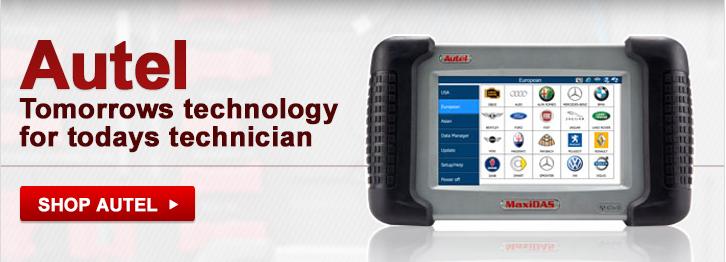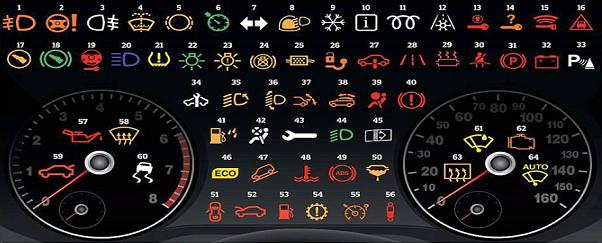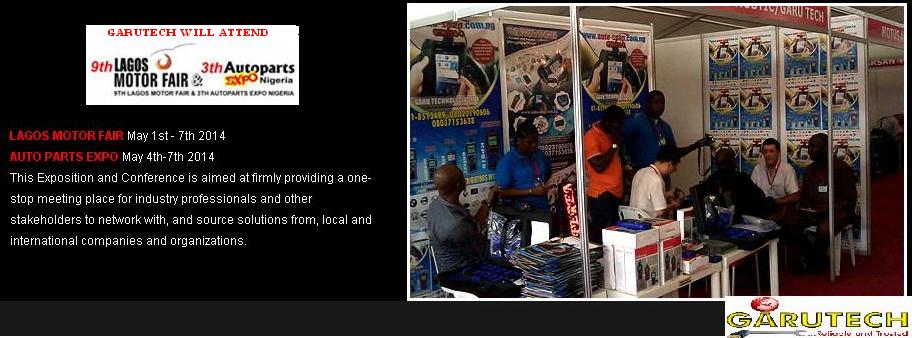All About Onboard Diagnostics Generation 2 (OBD II)
 Understanding Onboard Diagnostics OBDII: Past, Present & Future
Understanding Onboard Diagnostics OBDII: Past, Present & Future
scan tool companion information .
Though the technology is still relatively new and has not had a big impact on the aftermarket yet, it will. The technology we are referring to is OBDII, the government mandated onboard diagnostic system for tattling on emission failures. All 1996 and newer model year passenger cars and light trucks are OBDII-equipped, but the first applications were actually introduced back in 1994 on a limited number of vehicle models (see box).
What makes OBDII different from all the self-diagnostic systems that proceeded it is that OBDII is strictly emissions oriented. In other words, it will illuminate the Malfunction Indicator Lamp (MIL) anytime a vehicle’s hydrocarbon (HC), carbon monoxide (CO), oxides of nitrogen (NOX) or evaporative emissions exceed 1.5 times the federal test procedure (FTP) standards for that model year of vehicle. That includes anytime random misfires cause an overall rise in HC emissions, anytime the operating efficiency of the catalytic converter drops below a certain threshold, anytime the system detects air leakage in the sealed fuel system, anytime a fault in the EGR system causes NOX emissions to go up, or anytime a key sensor or other emission control device fails. In other words, the MIL light may come on even though the vehicle seems to be running normally and there are no real driveability problems.
The main purpose of the MIL lamp on an OBDII-equipped vehicle, therefore, is to alert motorists when their vehicles are polluting so they will get their emission problems fixed. But as we all know, motorist are very good at ignoring warning lamps, even when steam is belching from under the hood or the engine is making horrible noises. That is why regulators want to incorporate OBDII into existing and enhanced vehicle emissions inspection programs. If the MIL lamp is found to be on when a vehicle is tested, it does not pass even if its tailpipe emissions are within acceptable limits.
WHY OBDII?
The problem with most vehicle inspection programs is that they were developed back in the 1980s to identify “gross polluters.” The tests were designed primarily to measure idle emissions on carbureted engines (which are dirtiest at idle), and to check for only two pollutants: unburned hydrocarbons (HC) and carbon monoxide (CO). The pass/fail cut points that were established for the various model years were also made rather lenient to minimize the number of failures. Consequently, a lot of late model vehicles that should not be passing an emissions test are getting through anyway.
Efforts to upgrade vehicle inspection programs to the new I/M 240 standards stalled because of a lack of public and political support. I/M 240 requires “loaded-mode” emissions testing on a dyno while the vehicle is driven at various speeds following a carefully prescribed driving trace. The tailpipe gases are then analyzed to check not only total HC and CO emissions (in grams rather than parts per million or percent), but also oxides of nitrogen (NOX). The total emissions for the entire 240-second driving cycle is averaged for a composite emission score that determines whether or not the vehicle passes the test. Also included is an evaporative purge flow test to measure the flow rate of the canister purge valve, and an engine off pressure test of the evaporative emission control system to check the fuel tank, lines and cap for leaks.
The I/M 240 program was to have been required in most areas of the country that do not meet national ambient air quality (NAAQ) standards. But after the program faltered in Maine, many states balked and only some went ahead with the I/M 240 program. The cost and complexity of the I/M 240 program combined with less than enthusiastic public acceptance doomed it from the start. So most states are now using a simple OBD II plug-in test to check emissions compliance on 1996 and newer cars and trucks.
A SHORT HISTORY WITH FAR REACHING IMPLICATIONS
The origins of OBDII actually date back to 1982 in California, when the California Air Resources Board (ARB) began developing regulations that would require all vehicles sold in that state starting in 1988 to have an onboard diagnostic system to detect emission failures. The original onboard diagnostic system (which has since become known as OBDI) was relatively simple and only monitored the oxygen sensor, EGR system, fuel delivery system and engine control module.
OBDI was a step in the right direction, but lacked any requirement for standardization between different makes and models of vehicles. You still had to have different adapters to work on different vehicles, and some systems could only be accessed with costly “dealer” scan tools. So when ARB set about to develop standards for the current OBDII system, standardization was a priority: a standardized 16-pin data link connector (DLC) with specific pins assigned specific functions, standardized electronic protocols, standardized diagnostic trouble codes (DTCs), and standardized terminology.
Another limitation of OBDI was that it could not detect certain kinds of problems such as a dead catalytic converter or one that had been removed. Nor could it detect ignition misfires or evaporative emission problems. Furthermore, OBDI systems would only illuminate the MIL light after a failure had occurred. It had no way of monitoring progressive deterioration of emissions-related components. So it became apparent that a more sophisticated system would be required.
The California Air Resources Board eventually developed standards for the next generation OBD system, which were proposed in 1989 and became known as OBDII. The new standards required a phase-in starting in 1994. The auto makers were given until the 1996 model year to complete the phase-in for their California vehicles.
Similar standards were incorporated into the federal Clean Air Act in 1990 which also required all 49-state vehicles to be OBDII equipped by 1996 — with one loophole. The OBDII systems would not have to be fully compliant until 1999. So some 1996 OBDII systems may lack one of the features normally required to meet the OBDII specs, such as the evaporative emissions purge test.
EARLY OBDII APPLICATIONS
1994 vehicles equipped with the early OBD II systems include Buick Regal 3800 V6, Corvette, Lexus ES3000, Toyota Camry (1MZ-FE 3.0L V6) and T100 pickup (3RZ-FE 2.7L four), Ford Thunderbird & Cougar 4.6L V8, and Mustang 3.8L V6.
1995 vehicles with OBDII include Chevy/GMC S, T-Series pickups, Blazer and Jimmy 4.3L V6, Ford Contour & Mercury Mystique 2.0L four & 2.6L V6, Chrysler Neon, Cirrus and Dodge Stratus, Eagle Talon 2.0L DOHC (nonturbo), and Nissan Maxima and 240 SX.
Not all of these early applications are fully OBDII compliant, but do include the major diagnostic features of the current system.
OBDII HARDWARE UPGRADES
Don’t think for a moment that OBDII is just a fancier version of self-diagnostic software. It is that and much, much more.
OBDII-equipped vehicles typically have:
Twice the number of oxygen sensors as non-OBDII vehicles
(most of which are heated O2 sensors). The additional O2 sensors are located downstream of the catalytic converter.
More powerful powertrain control modules, with either
16-bit (Chrysler) or 32-bit (Ford & GM) processors to handle up to 15,000 new calibration constants that were added by OBDII.
Electronically Erasable Programmable Read Only Memory
(EEPROM) chips that allows the PCM to be reprogrammed with revised or updated software changes using a terminal link or external computer.
A modified evaporative emission control systems with a diagnostic switch for purge testing, or an enhanced EVAP system with a vent solenoid, fuel tank pressure sensor and diagnostic test fitting,
More EGR systems with a linear EGR valve that is electronically operated and has a pintle position sensor.
Sequential fuel injection rather than multiport or throttle body injection.
Both a MAP sensor and MAF sensor for monitoring engine load and airflow.
TOOLING UP FOR OBDII
To work on an OBDII-equipped vehicle, you must have an OBD II compliant scan tool. Many scan tools made prior to 1996 are not OBD II compatible and cannot be upgraded with a simple cartridge change. You need a hardware adapter for these older scan tools or a newer scan tool that is OBD II compatible.
Dealer technicians don’t have it any better. GM requires a Tech 2 scan tool for its 1996 and newer vehicles. The Tech 2 scan tool has a 9 parameter screen display, a 5 parameter freeze option for scrolling, bar graph and line chart capabilities, current data capture and the ability to store two snapshots (of data, not your wife and kids). Likewise, Chrysler has its DRB III tool, and Ford has its New generation Star tester for OBDII-equipped vehicles from 1994 and up.
If you are looking for a good reference book on OBDII, GM has an excellent training manual “On-Board Diagnostics Generation Two” P/N 16030.02-1. The book costs $20 and is available through Mascotech Marketing Services, 1972 Brown Road, Auburn Hills, MI 48326 (1-800-393-4831).
THAT PESKY MIL LAMP

onboard diagnostics, obd ii, check engine light Most technicians are pretty familiar with the operation of the “Check Engine” or “Malfunction Indicator Lamp” (MIL) on late model vehicles. But on OBDII-equipped vehicles, it may seem like the MIL lamp has a mind of its own.
On 1996 General Motors J-, N- and H-body cars, several rental fleets have encountered problems with the MIL lamp coming on because motorists and fleet personnel have not been using the correct refueling procedure when filling the fuel tank with gas. On these cars, the OBDII system applies vacuum to the evaporative emissions control system to check for air leakage. If the gas cap is not tight or the tank is filled while the key is on or the engine is idling, it can trigger a false P0440 code causing the MIL light to come on. GM is advising its dealers and fleet customers to reflash the EEPROM with revised OBDII programming that waits to check the evaporative emissions system until the vehicle is in motion.
Bad gas has also been causing some false MIL lights. When the vehicle is diagnosed, the technician finds a P0300 random misfire code which would normally be set by a lean misfire condition due to a vacuum leak, low fuel pressure, dirty injectors, etc., or an ignition problem such as fouled plugs, bad plug wires, weak coil, etc. The OBDII self-diagnostics tracks misfires by individual cylinder, and considers up to a 2% misfire rate as normal. But water in the gas or variations in the additive package in reformulated gasoline in some areas of the country can increase the misfire rate to the point where it triggers a code.
To minimize the occurrence of false MIL lamps, the OBDII system is programmed so that the MIL lamp only comes on if a certain kind of fault has been detected twice under the same driving conditions. With other faults (those that typically cause an immediate and significant jump in emissions), the MIL light comes on after only a single occurrence. So to correctly diagnose a problem, it is important to know what type of code you are dealing with.
Type A diagnostic trouble codes are the most serious and will trigger the MIL lamp with only one occurrence. When a Type A code is set, the OBDII system also stores a history code, failure record and freeze frame data to help you diagnose the problem.
Type B codes are less serious emission problems and must occur at least once on two consecutive trips before the MIL lamp will come on. If a fault occurs on one trip but does not happen again on the next trip, the code won’t “mature” and the light will remain off. When the conditions are met to turn on the MIL lamp, a history code, failure record and freeze frame data are stored the same as with Type A codes.
A drive cycle or trip, by the way, is not just an ignition cycle, but a warm-up cycle. It is defined as starting the engine and driving the vehicle long enough to raise the coolant temperature at least 40 degrees F (if the startup temperature is less than 160 degrees F).
Once a Type A or B code has been set, the MIL will come on and remain on until the component that failed passes a self-test on three consecutive trips. And if the fault involved something like a P0300 random misfire or a fuel balance problem, the light will not go out until the system passes a self-test under similar operating conditions (within 375 rpm and 10% of load) that originally caused it to fail. That is why the MIL lamp will not go out until the emissions problem has been repaired. Clearing the codes with a scan tool or disconnecting the powertrain control module power supply will not prevent the lamp from coming back on if the problem has not been fixed. It may take one or more driving cycles to reset the code, but sooner or later the MIL lamp will go back on if the problem is still there.
Likewise, the MIL won’t necessarily go on if you intentionally disconnect a sensor. It depends on the priority ranking of the sensor (how it affects emissions), and how many driving cycles it takes for the OBDII diagnostics to pick up the fault and set a code.
As for Type C and D codes, these are non-emissions related. Type C codes can cause the MIL lamp to come on (or illuminate another warning lamp), but Type D codes do not cause the MIL lamp to come on.
RUNNING AN OBDII DRIVE CYCLE
Suppose you have “fixed” an emissions problem on an OBDII-equipped vehicle. How can you check your work? By performing what is called an “OBDII drive cycle.”
The purpose of the OBDII drive cycle is to run all of the onboard diagnostics. The drive cycle should be performed after you have erased any trouble codes from the PCM memory, or after the battery has been disconnected. Running through the drive cycle sets all the system monitors so that subsequent faults can be detected.
The OBDII drive cycle begins with a cold start (coolant temperature below 122 degrees F and the coolant and air temperature sensors within 11 degrees of one another).
NOTE: The ignition key must not be on prior to the cold start otherwise the heated oxygen sensor diagnostic may not run.
1. As soon as the engine starts, idle the engine in drive for two and a half minutes with the A/C and rear defrost on. OBDII checks oxygen sensor heater circuits, air pump and EVAP purge.
2. Turn the A/C and rear defrost off, and accelerate to 55 mph at half throttle. OBDII checks for ignition misfire, fuel trim and canister purge.
3. Hold at a steady state speed of 55 mph for three minutes.
OBDII monitors EGR, air pump, O2 sensors and canister purge.
4. Decelerate (coast down) to 20 mph without braking or depressing the clutch. OBDII checks EGR and purge functions.
5. Accelerate back to 55 to 60 mph at half throttle. OBDII checks misfire, fuel trim and purge again.
6. Hold at a steady speed of 55 to 60 mph for five minutes.
OBDII monitors catalytic converter efficiency, misfire, EGR, fuel trim, oxygen sensors and purge functions.
7. Decelerate (coast down) to a stop without braking. OBDII makes a final check of EGR and canister purge.
To OBD II Guide Get OBD2 Quick Reference Guide
BEYOND OBDII
OBDII is a very sophisticated and capable system for detecting emissions problems. But when it comes to getting motorists to fix emission problems, it is no more effective than OBDI. Unless there is some type of mandatory enforcement, such as checking the MIL light during an emissions inspection, OBDII is just another idiot light.
Currently under development are plans for OBDIII, which would take OBDII a step further by adding telemetry. Using miniature radio transponder technology similar to that which is already being used for automatic electronic toll collection systems, an OBDIII-equipped vehicle would be able to report emissions problems directly to a regulatory agency. The transponder would communicate the vehicle VIN number and any diagnostic codes that were present. The system could be set up to automatically report an emissions problem via a cellular or satellite link the instant the MIL light comes on, or to answer a query from a cellular, satellite or roadside signal as to its current emissions performance status.
What makes this approach so attractive to regulators is its effectiveness and cost savings. Under the current system, the entire vehicle fleet in an area or state has to be inspected once every year or two to identify the 30% or so vehicles that have emissions problems. With remote monitoring via the onboard telemetry on an OBDIII-equipped vehicle, the need for periodic inspections could be eliminated because only those vehicles that reported problems would have to be tested. In effect, GM is essentially offering that now with their OnStar system on 2004, 2005 and 2006 vehicles. OnStar monitors the OBD II system and notifies the driver if a fault is detected. GM says by detecting problems early, it can reduce repair costs (and save GM a bundle in warranty costs).
On one hand, OBDIII with its telemetry reporting of emission problems would save consumers the inconvenience and cost of having to subject their vehicle to an annual or biennial emissions test. As long as their vehicle reported no emission problems, there would be no need to test it. On the other hand, should an emissions problem be detected, it would be much harder to avoid having it fixed, which is the goal of all clean air programs anyway. By zeroing in on the vehicles that are actually causing the most pollution, significant gains could be made in improving our nation’s air quality. But as it is now, polluters may escape detection and repair for up to two years in areas that have biennial inspections. And in areas that have no inspection programs, there is no way to identify such vehicles. OBDIII would change all that.
According to Mark Carlock with California’s Air Resources Board, the technology exists now to make OBDIII possible. “The idea is to streamline the inspection process by only inspecting those vehicles that really need it.” Carlock says the technology to do so is “no big deal.” But he concedes that it might be years before OBDIII is actually be required on new vehicles.
A prototype system built by GM Hughes Electronics has already been evaluated by ARB that uses a roadside transmitter to interrogate vehicles as they pass by. The system uses ultra low power 10 milliwatt receiver stations and 1 milliwatt transmitters (which is about 1,000 times less power than a typical cellular telephone) with a broadcast frequency of 915 Mhz. The system is reportedly capable of retrieving information from 8 lanes of bumper-to-bumper traffic whizzing by at speeds up to 100 mph!
When the vehicle receiver hears the query signal from a stationary or portable roadside transmitter, it transmits back an answer in the form of the vehicle’s 17-digit VIN number plus an “okay” signal or any trouble codes that may be present. The information can then be used to identify vehicles that are in violation of clean air statutes so a notice can be sent that repairs and/or smog testing is required. Or, the information could be used on the spot to identify vehicles for a pullover roadside emissions check or issuing an emissions citation.
The projected cost of such a system would be $50 per vehicle, says Carlock, based on similar transponders that are in use for electronic toll collecting. The transponders are about the size of a small calculator.
The same basic approach could also be used with existing cellular phone links (local station networks) and/or satellite systems. To keep motorists from tampering with or disabling their telemetry systems, vehicles could be interrogated randomly or on a scheduled basis to monitor their condition. The OBDIII telemetry could also be combined with global positioning system (GPS) technology to document or monitor the whereabouts of vehicles.
Orbiting 11,000 miles above the earth’s surface are 24 military satellites that make up the Navstar global positioning system. By timing radio signals from these satellites, the position of a vehicle, boat or plane anywhere on the earth can be fixed within a few meters. The GPS system is currently used by many fleets for tracking the whereabouts of their vehicles as well as by onboard navigation systems for pinpointing a vehicle’s location on an electronic map.
The advantages of using a satellite based telemetry system for OBDIII rather than a roadside system are:
Greater coverage of the entire vehicle population for more accurate surveillance. Vehicles could be monitored and queried no matter where they were, even while sitting in a garage or driveway. There would be no way to avoid the watchful eye of the emissions police.
Being able to locate vehicles that are in violation of clean air statutes, either for “demographic studies” or to track down and arrest violators.
Being able to monitor the whereabouts of vehicles for purposes other than emissions surveillance such as recovering stolen vehicles (like the LoJack anti-theft system ), keeping tabs on suspected drug dealers, gang members and other undesirables.
Being able to disable vehicles that belong to emission scofflaws by transmitting a secret code. Law enforcement officers might also be able to use such a code to disable a vehicle fleeing from a crime scene or one that belonged to someone with a backlog of unpaid traffic violations.
The specter of having Big Brother in every engine compartment and driving a vehicle that rats on itself anytime it pollutes is not one that would appeal to many motorists. So the merits of OBDIII would have to be sold to the public based on its cost savings, convenience and ability to make a real difference in air quality. Even so, any serious attempt to require OBDIII may run afoul of Fourth Amendment issues over rights of privacy and protection from government search and seizure. Does the government have the right to snoop under your hood anytime it chooses to do so, or to monitor the whereabouts of your vehicle? These issues will have to be debated and resolved before OBDIII stands a chance of being accepted.
Another change that might come with OBDIII would be even closer scrutiny of vehicle emissions. The misfire detection algorithms currently required by OBDII only watch for misfires during driving conditions that occur during the federal driving cycle, which covers idle to 55 mph and moderate acceleration. It does not monitor misfires during wide open throttle acceleration. Full range misfire detection has been required since 1997. OBDIII could go even further by requiring “fly-by-wire” throttle controls to reduce the possibility of misfires on the coming generation of low emission and ultra low emission vehicles.















One Response
Suffer from kidney disease? aussie naturopath tells all – how hos patients avoid dialysis
browse around this site https://twitter.com/soniaw17/status/356423292351021058